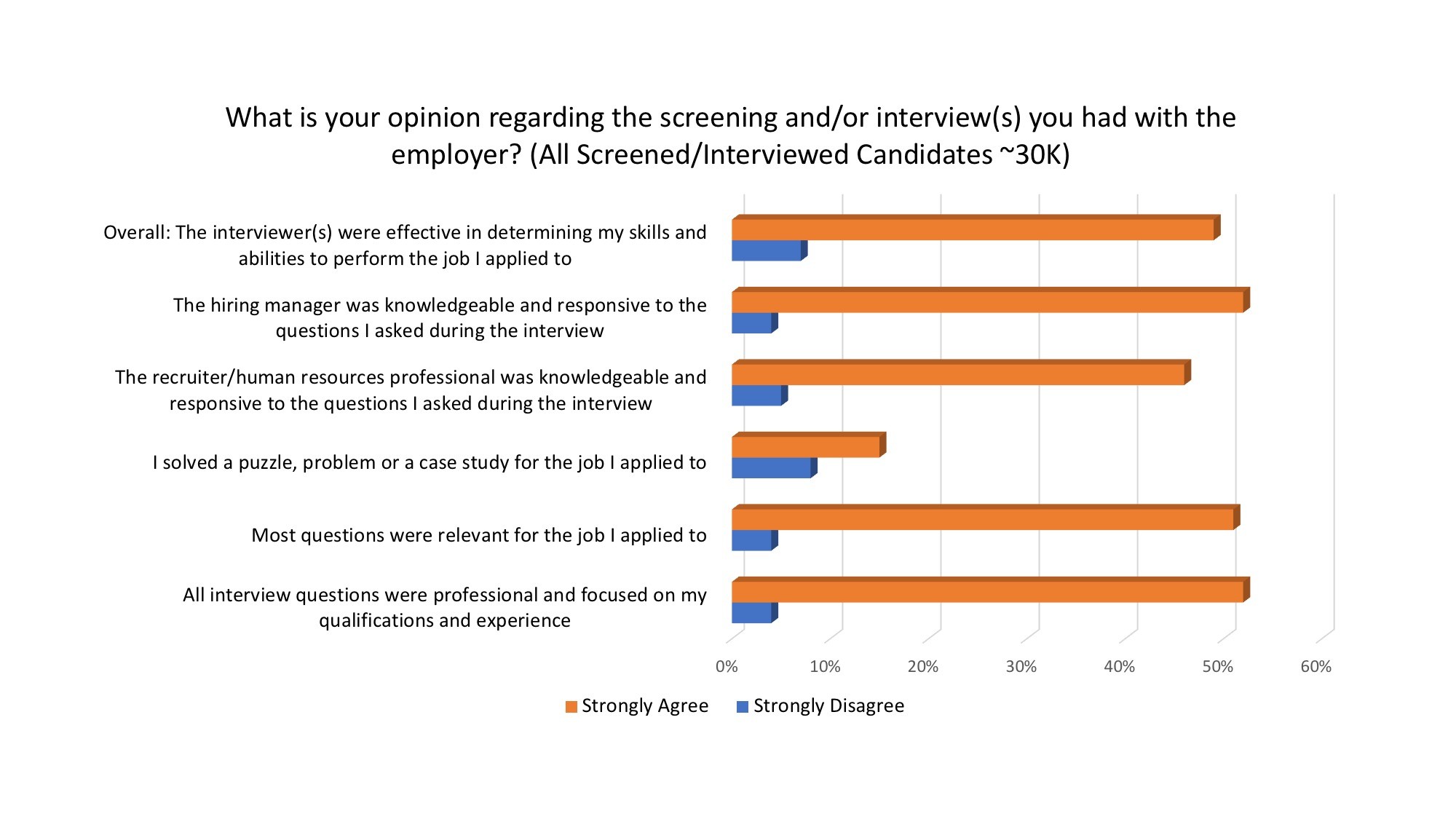
Poetry in Recruiting Motion
I'm happy to be
creative as long as you
listen to me, please
–Interview Haiku, #TheCandEs
When I learned that Hyland, the creators of OnBase, asks candidates to submit a poem as part of their “creative” screening process, I was intrigued to say the least. It’s voluntary, not required, but when their Talent Acquisition Program Manager shared that most candidates actually do submit a poem, I was impressed. Add to that the fact that they also ask their candidates to make a presentation during the interview process as a way to see how they organize and communicate information.
Then there’s Kimberly-Clark, a consumer-products company that sends coupons to phone-screened candidates. They also identify peer employees to act as the liaison for candidates on interview day, ensuring that they are taken care of during the interview process. Hiring managers are required to send thank you’s to candidates post-interview, preferably with some feedback, and recruiters follow up with candidates within 24 hours post-interview. Kimberly-Clark also created a candidate experience guide and for all recruiters and hiring managers that includes a toolkit to provide guidance on each phase of the hiring process, talking points, behavioral interview guides and more.
And then there’s Sharp HealthCare, where they now hold monthly leadership training for talent acquisition pros and their hiring manager counterparts to ensure a fair and consistent structured interview process for sought-after nursing candidates. They’re in a highly competitive healthcare market in San Diego and it’s critical that they get the interviews right the first time.
These are all exciting recruiting insights learned at some of our most recent Candidate Experience Workshops hosted by CandE winning companies, those companies whose positive candidate ratings are the highest in our annual Talent Board benchmark research program (there are still workshops to sign up for and still time to participate in the 2018 benchmark research program).
While these initiatives aren’t necessarily unique to the companies referenced above – many more companies big and small across industries are improving their screening and interview processes with or without winning our awards – the ones with the highest positive candidate ratings are seeing the greatest return on their businesses and their employer brands in the form of returning qualified applicants, more referrals and even purchases for consumer-based companies.
At Talent Board, we’ve reported year after year from our research that communication and feedback are a continuous competitive differentiator for candidates from pre-application to onboarding, and both for employers and candidates, especially critical during screening and interviewing. Candidates want a fair shake, and the more opportunities they have at convincing potential employers they are the ones who should be hired, the better.
In fact, the more screening and interview events for all candidates actually garner higher ratings. This is most likely due to more engagement for the candidates and the candidates’ expectations being higher after multiple interactions with a potential employer (or for a current employer if it’s an internal move for candidates).
For example, overall satisfaction with the interview process and being able to convey their skills and experience, 36 percent of all the candidates from our North American 2017 research data who had only 1-2 interviews say they were extremely satisfied with the interview process. But it jumps to 48 percent when there are more than 8 interviews, an increase of 29 percent. Most of these candidates in this data set, 85 percent of them, did not receive an offer at the end of the day either, so it isn’t that skewed even after you take the offers and hires out of the equation. In future analyses we’ll break this down by job type and external and internal candidates.
However, too much time between screening and interview events can impact overall candidate experience and satisfaction negatively. For example, when less than one week transpired between final interview and offer for candidates from our North American 2017 research data, their rating was 4.5 out of 5 (1-5 Likert scale with 1 being the lowest score and 5 being the highest score), while when more than 4 weeks transpired in between, the rating drops to 4 out of 5. Still a decent rating overall, because in the end we all want that job, and if you’re engaging me I’m digging it, but it’s still an 11 percent drop in the interview rating going from 8+ interviews to 1-2.
In the end, most of the candidates from all the employers that participated in our research told us last year that they “strongly agreed” that the interview activities and the interviewers were effective in determining their skills and abilities to perform the job they applied to (see Figure 1). Right on to all of the above.
That’s poetry in recruiting motion.
Figure 1. Candidate Screen/Interview Opinion

Trending
-
1 SEO Mistakes That Could Be Costing Your Shopify Store Sales
Daniel Hall -
2 Strategies for Safeguarding Assets and Investments
Daniel Hall -
3 The Role of PR Firms in Crisis Management and Damage Control
Nitish Mathur -
4 How to Make Appealing Visuals for Your E-commerce Store
Daniel Hall -
5 The Competitive Landscape of Low-Cost Carriers in Belgium: TUI Fly Belgium’s Position
Daniel Hall





Comments